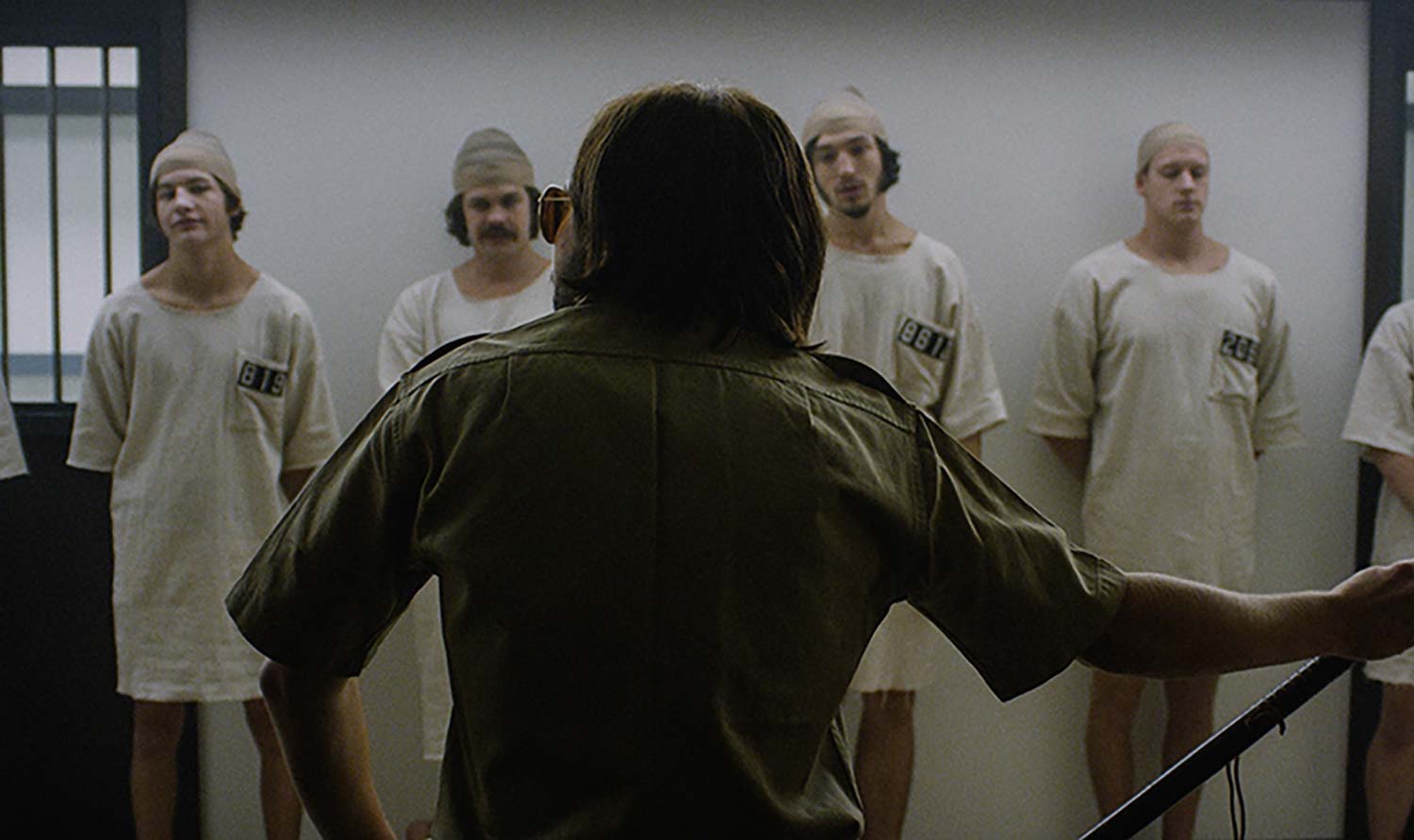They call this film The Stanford Prison Experiment, but it could also be a club of the most talented up and coming young male actors in Hollywood. If the plot about an experiment involving young men portraying prisoners and guards in a jail setting seems familiar, it’s because this is one of many films based on the 1970 experiment of Dr. Phillip Zimbardo. The film and screenplay unravel the same curiosity for the viewer that Zimbardo experienced watching the events unfold. Its compelling nature could be equal to pouring salt on a snail just to see what happens. It’s an uncomfortable film yet highly fascinating in the realm of human psychology and the study of basic human nature.
Dr. Zimbardo (Crudup) and his colleagues have designed an experiment where they will select 24 young males who applied, randomly divide them into two groups: prisoners and guards. For two weeks they will remain in these roles, unable to leave, they are also getting $15 an hour. Under no circumstances are the guards allowed to hit the prisoners. Yet after day two, the attitudes of the guards are so hostile the prisoners begin to rebel, chaos ensues, and Zimbardo’s team watches through video monitor, never allowing the experiment to be interrupted even when the rules are broken.
"The Stanford Prison Experiment is fascinating, but likely more so in a psychology classroom than a movie theater"
About two scenes into the film with Ezra Miller (The Perks of Being a Wall Flower, Trainwreck) and his scene stealing performance, the casting became the most interesting element. The more familiar faces like Miller, Sheridan (Mud, Tree of Life), Angarano (Almost Famous), Mann (Me and Earl and the Dying Girl) get the juicer roles. I recommend watching this film with IMDB by your side, because all these guys you will recognize, but their shaggy look and facial hair for the time era will keep you guessing what you saw them in and distract from the plot.
The first half of the film focuses on the degradation the guards put the prisoners through and we wait in anticipation to see how far they will go. Zimbardo says the reason for the bottomless prison uniforms is to “feminize them” or “take away all the things that make them, them”. The second half of the film focuses on the ethical boundaries of the experiment. “I never expected this,” Zimbardo says at one point. The turning point for me is when one prisoner notes that the guards have it easier, pushing them around and administering authority. “We need to make the guards earn their pay,” prisoner 8612 says. The Stanford Prison Experiment is fascinating, but likely more so in a psychology classroom than a movie theater, as the film lacks narrative structure, it starts to feel more like a documentary reenactment.
Final Thought
A must see for viewers interested in the psychology of human nature.

